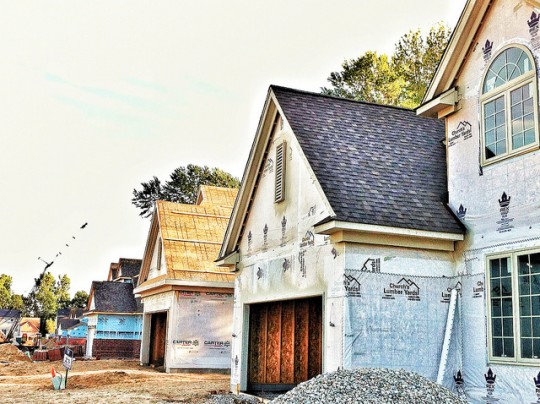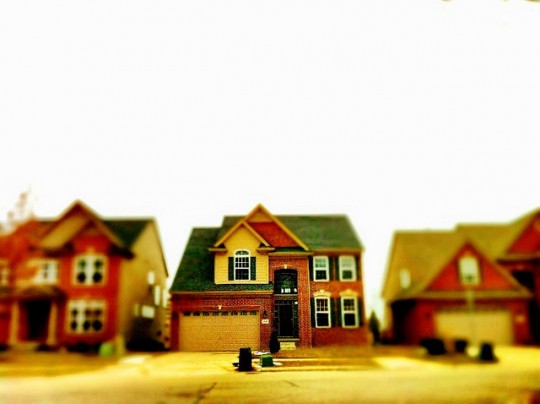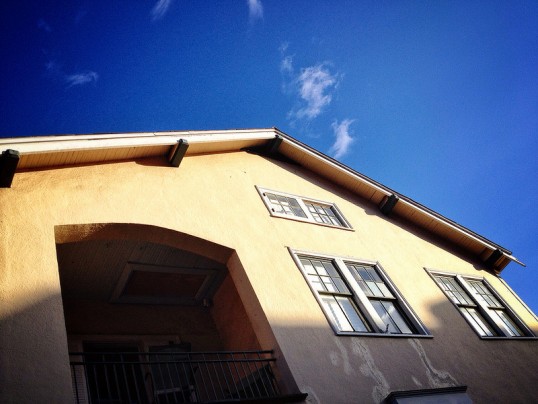Though prices usually weaken at the end of the year, the most recent S&P/Case-Shiller Home Price Indices show year-over-year increases of nearly 14 percent in both the 10-city and 20-city Composites through the end of November 2013. The gains continue the upward trend of year-over-year improvement that began in June 2012. David M. Blitzer, Chairman of the Index Committee at S&P Dow Jones Indices, said home prices continue to rise despite last May’s jump in mortgage rates. According to Blitzer, mortgage applications for purchase were up in recent weeks which validates home builders’ optimism as seen in the most recent survey from the National Association of Home Builders. Combined with low inflation, homeowners are enjoying real appreciation and rising equity values, Blitzer said. Though home price increases are expected to moderate this year, Blitzer feels housing will make further contributions to the economy in 2014. More here.
Tag Archive for mortgage rates
New Home Sales Beat Expectations
According to estimates released by the U.S. Census Bureau and the Department of Housing and Urban Development, new home sales fell 2.1 percent in November from October’s pace. Despite the dip, sales of newly built, single-family homes are now 16.6 percent above last year’s estimate. And though November’s pace slipped, October’s previously reported rate was revised upward by 30,000, making that month’s pace a post-recession high. August and September’s sales rates were also revised upward by a total of 58,000. With those revisions, November’s rate – while slower than October – still beat economists’ expectations for the month. The new data indicates that the housing recovery is on track and buyers have largely adjusted to higher prices and mortgage rates. The median sales price of new houses sold in November was $270,900; the average sales price was $340,300. There was a 4.3 month supply of new homes available for sale at the end of the month. More here.
Surging New Home Sales Not What They Seem
Delayed due to the government shutdown, new home sales data for September and October was released together this year. The results, from the U.S. Census Bureau and the Department of Housing and Urban Development, show a 25.4 percent sales spike in October from September’s rate. The surge is the largest in more than 30 years but isn’t all it seems to be. In fact, the report includes a downward revision of August’s estimate that dropped that month’s sales estimate by 15 percent. From there, new home sales fell an additional 6.6 percent in September. That means, October’s skyrocketing sales were merely making up for a slow end of the summer sales season. Peter Boockvar, chief market analyst of economic advisory firm The Lindsey Group, told NBC News that weak sales activity from July through September was clearly based on mortgage rates. According to Boockvar, falling rates in October brought out buyers who may have previously been on the fence. More here and here.
What’s Ahead For Housing in 2014
According to Freddie Mac’s chief economist, Frank Nothaft, 2014 should shape up to be better than 2013. Nothaft, in a recent article, said there’s reason to be optimistic about both the economy and the housing market. Economic growth, for example, is expect to be between 2.5 and 3.0 percent in the new year, more than 0.5 percent better than 2013. The accelerated growth will lead to continued improvement in the job market, which should push the unemployment rate below 7 percent by mid-year. Single-family home sales and housing starts will both rise to their highest level since 2007 and – despite rising mortgage rates – housing will remain generally affordable across the majority of the country. For-sale inventory, on the other hand, will be tight throughout the year due to the number of potential sellers constricted by negative equity. Home prices, however, will continue to rise, relieving underwater homeowners and helping to support higher home sales. According to Nothaft, both home prices and sales will come in around 5 percent higher than they were in 2013. More here.
Household Formation Slow Among Millennials
As of March 2013, only 34 percent of adults between the ages of 18 and 32 headed their own household. And that number has barely changed since last year, according to a recent report from the Pew Research Center. The lack of improvement in the rate of household formation among young adults has little to do with housing conditions, however. Record affordability and historically low mortgage rates have done little to reverse the high number of Millennials still living in their parents’ home. The reason more than a third of young adults are still living at home four years into an economic recovery is directly related to the job market. This year, 40 percent of employed young adults headed their own household, compared to 25 percent among unemployed Millennials. As the number of employed young adults rises, so to will the household formation rate and number of first-time home buyers entering the housing market. More here.
Housing Records Strong September Despite Challenges
According to the most recent Campbell/Inside Mortgage Finance Housing Pulse Tracking Survey, the housing market’s vital signs remained strong in September. The survey, which polls nearly 2,000 real-estate agents across the country each month, found that the recent dip in sales numbers was not caused by higher mortgage rates or any other obstacle to market health. Thomas Popik, research director for the Housing Pulse survey, said the emerging slowdown in home purchases appears to be largely seasonal. According to Popik, September’s results show it was another month where higher rates had only a moderate effect on the market overall. Also in the release, the housing market was found to have performed quite well in September, despite the continuing decline in homebuyer traffic among current homeowners, first-time buyers, and investors. The survey found time on market was at a four-year low, homes are selling for a higher percentage of their list price and distressed property sales have fallen, all indicators of improved market conditions. More here and here.
Mortgage Rates Hit Four-Month Low
According to the Mortgage Bankers Association’s Weekly Applications Survey, demand for mortgage loans held steady last week from the week before. Total mortgage application volume was virtually unchanged, declining just 0.6 percent from the previous week. The week’s results don’t include an adjustment for the Columbus Day holiday but, on an unadjusted basis, refinance activity fell 1 percent while purchase-loan demand rose an equal amount. Also in the report, average mortgage rates hit their lowest point since June 2013, falling again last week. Despite the drop, the refinance share of total mortgage activity decreased to 65 percent, from 66 percent the week before. The MBA’s weekly survey covers more than 75 percent of all U.S. residential mortgage applications and has been conducted since 1990. More here.







